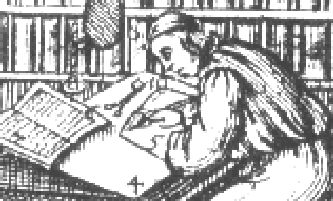
Text Encoding Initiative
Structure and layout
By structure
is meant the division of the work into its constituent parts; by layout
the arrangement of the text on the page. In medieval manuscripts and many early printed books, there is rarely any connection between these two.
The text of the work and the physical object carrying that text thus have separate structural hierarchies, both of which need ideally to be encoded, even in the most basic of transcriptions. In order to represent the former the TEI recommendeds that the <div> element be used for the largest structural divisions in prose texts, with a type attribute to specify the nature of the division, chapter
, section etc. Paragraphs within these divisions can be tagged using <p>. Verse texts should be marked up using the tags <l> (for line
) and <lg> (for line-group
, i.e. a group of lines functioning as a formal unit), again with a type attribute to identify the type of unit, e.g. stanza
, couplet.
Lines and line-groups can also be numbered and identified using the n and id attributes. For the structure of the physical document, it is recommended that empty milestone
elements be used, <pb/>, <cb/> and <lb/>, for page-, column- and line-boundaries respectively, which can also be numbered and provided with a xml:id.